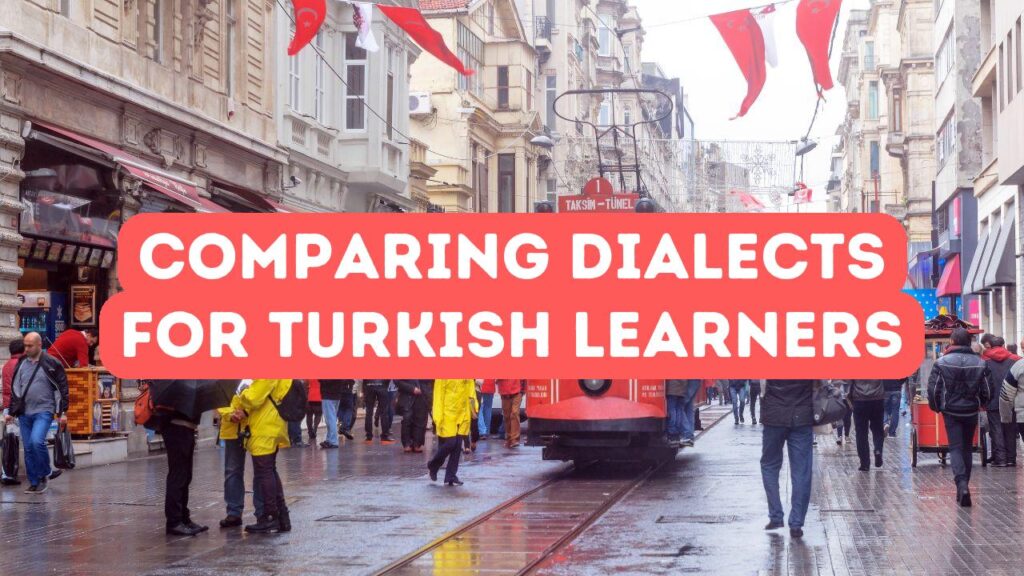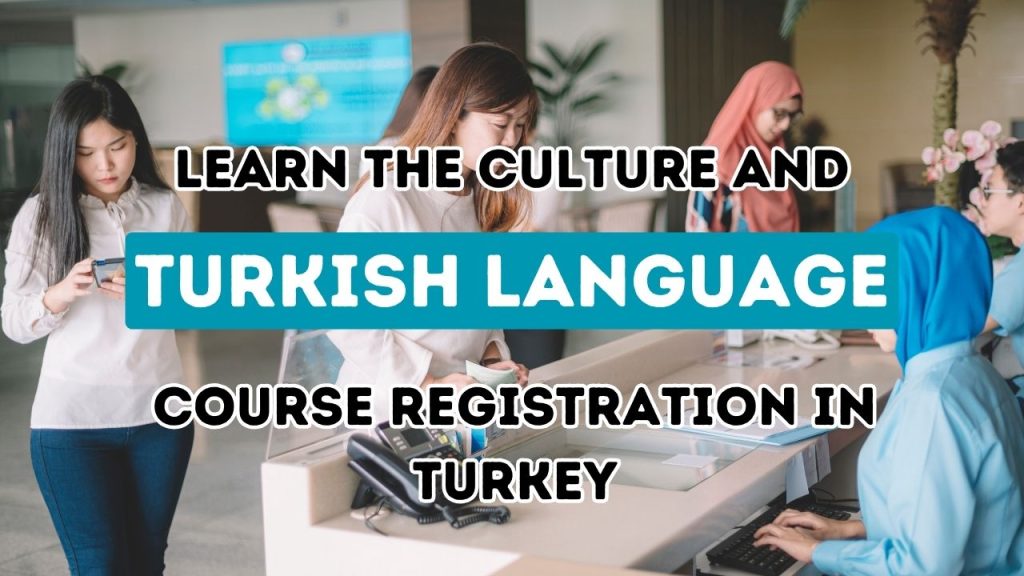Exploring the fascinating world of Turkish dialects can feel like embarking on a treasure hunt. For language learners eager to expand their horizons, understanding these dialects is crucial. Much like a mosaic, the Turkish language is rich in diversity, reflecting regional flavors that entice learners to dig deeper. With over a dozen dialects to compare, each region offers unique nuances. Learning Turkish becomes an adventure through winding linguistic paths, where every twist can surprise. For anyone diving into the Turkish language comparison, it’s essential to recognize the diverse tapestry that makes up language diversity in Turkey. From urban centers to remote villages, each voice speaks volumes of history and culture, making it more than just words. So, when you learn Turkish, remember you’re not just picking up a language—you’re unlocking a mosaic of experiences. How do these dialects shape your understanding of Turkey? Discovering these differences can lead to a richer language learning journey.
Unlocking the Nuances: A Deep Dive into Turkish Regional Variations
Diving into the Turkish dialects is like opening a book rich with tales of the past. Each dialect tells a story, rooted deeply in the heart of Turkey’s vibrant culture. Imagine standing in the bustling streets of Istanbul, where the words dance with the vibrancy of urban life. Contrast this with the soft, melodic tones you might hear in a coastal village on the Aegean. For language learners, these regional variations are not just hurdles; they are bridges to understanding. They illuminate the intricate layers of language diversity in Turkey, providing context to the history and lifestyle of its people. Engaging with these dialects allows learners to truly learn Turkish, far beyond textbook language. It’s an adventure in speech that reveals a landscape of verbal artistry, waiting to be appreciated and understood.
In embarking on a journey to learn Turkish, understanding regional nuances is akin to being a detective uncovering clues about a culture. Turkish dialects offer a window into the soul of its diverse regions. Imagine the earthy dialects of Anatolia or the lyrical cadences echoing in Eastern Turkey, each a testament to an ancient way of life. For language learners, embracing these variations is a crucial part of the Turkish language comparison. It’s not just about speaking; it’s about feeling the rhythm of a place and tasting its essence through language. Unearthing the layers of language diversity in Turkey reveals stories embedded in its dialects, calling to those curious spirits. Delving into this linguistic patchwork offers more than learning words; it provides a genuine slice of Turkish life, offering lessons far beyond the conventional classroom. Discovering these variations is like walking through a living history book, where every chapter is as colorful as the last.
Embarking on the learning journey of Turkish dialects is like setting sail on a vast linguistic sea. Each dialect, from the bustling bazaars of Gaziantep to the tranquil lanes of Trabzon, whispers secrets waiting to be unveiled by language learners. To learn Turkish means navigating through this intricate Turkish language comparison, where language diversity in Turkey shines brightly at every corner. Feel the pulse of the Black Sea, cool and rhythmic, or the heat of the Southeast, fiery and passionate. As you journey, every dialect becomes a key unlocking the heart of a region’s culture. Embrace the symphony of voices in this Turkish dialect adventure. Each inflection and phrase invites you deeper into the mosaic of life in Turkey, more than just spoken words—they’re your ticket to understanding the soul behind the speech. Sail through this tapestry and relish every moment of your Turkish journey.
Practical Tips for Mastering Turkish Dialects
Navigating Turkish dialects might initially seem daunting, but don’t worry—it’s all part of the adventure for language learners. Start by immersing yourself in the rich sounds of the Turkish language. Engage with native speakers and tune into regional radio stations or podcasts to pick up dialect-specific nuances. This approach allows learners to embrace language diversity in Turkey, uncovering accents and idiomatic expressions unique to each area. Learning Turkish is more than just memorizing vocabulary; it’s about feeling the rhythm and flow that each dialect offers. For effective Turkish language comparison, create a log of the differences you notice, gradually shaping your ear to the sounds that define these dialects. Whether you’re engrossed in urban settings or exploring rural rhythms, these mindful practices will enhance your capability to learn Turkish in its multifaceted glory. Every dialect is a doorway to a new cultural experience, so step boldly into this linguistic landscape and let each lesson unfold naturally.
Traveling through the vibrant terrain of Turkish dialects is an exciting expedition for language learners. To master these dialects, begin by actively engaging with diverse Turkish accents through daily interactions or media. Watching Turkish films with subtitles, for instance, can be an enjoyable and educational experience. Mimic the characters, repeating dialogues to capture the essence of the dialect’s sounds. Another useful technique involves recording yourself speaking and critically comparing your pronunciation to native speakers. This practice helps in refining your accent and understanding subtleties in the Turkish language. Furthermore, incorporating daily conversations with a language partner from different Turkish regions can considerably enhance your Turkish language comparison skills. Embrace language diversity in Turkey by celebrating regional cuisines and traditions, as they provide context to the dialects you learn. Remember, learning Turkish dialects is like stitching a quilt, each piece carefully chosen, leading to a beautiful tapestry of linguistic mastery.
Mastering Turkish dialects demands persistence and a strategic approach for language learners. First, immerse yourself in Turkish culture by connecting with native speakers who are eager to share their dialects. This interaction is priceless for a hands-on grasp of language diversity in Turkey. Keep a diary where you document idioms, expressions, and quirks encountered during these conversations. These notes will be your roadmap in the Turkish language comparison journey. Mobile apps can also be a useful tool, offering interactive exercises that focus on regions and dialects. As you learn Turkish, embrace mistakes as stepping stones. Practice with a buddy, providing constructive feedback to each other, ensuring mutual growth. Enrich your understanding by diving into Turkish literature or regional music; they reveal nuanced dialectal expressions. Progress may feel slow at times, but remember, each step brings you closer to fluency. Embark on this quest with curiosity and persistence.
Cultural Insights: Understanding the Impact of Dialects on Communication
Turkish dialects offer more than just variations in speech; they open the door to understanding the culture behind the words. For language learners, this is where the magic lies. The way people speak in different regions can reveal tales of traditions, history, and local customs. In bustling cities like Istanbul, dialects reflect modern influences, creating dynamic communication styles. On the other hand, rural areas echo with words passed down through generations, preserving ancestral heritage. As you learn Turkish, you’ll find that these dialects act like cultural lenses, providing glimpses into everyday life across Turkey’s diverse regions. Each dialect adds depth to the Turkish language comparison, enriching the tapestry of language diversity in Turkey. Embracing these speech patterns is not just about enhancing communication; it’s an invitation to connect with the spirit of the people themselves. Can a dialect speak louder than words? Indeed, it can, and understanding them deepens the connection.
Dialects are the vibrant threads that weave through the fabric of Turkish culture, revealing much about the nation’s heart. For language learners, the challenge lies not just in grasping vocabulary, but in discerning the subtle cues each dialect offers. When you learn Turkish, you encounter diverse expressions shaped by local tales and daily experiences. This aspect of Turkish language comparison is like stepping into a dialogue between the past and present. Take the Aegean region, where softer tones and leisurely conversations mirror the spirit of its coastline life. Contrast this with the Central Anatolian dialects, where brisk speech patterns reflect an agricultural rhythm. These variations aren’t just about language diversity in Turkey; they set the stage for more nuanced communication, enhancing your ability to connect with native speakers on a profound level. How do dialects transform mere words into cultural symbols? They bridge the gaps between regions, fostering unity and appreciation.
Delving into the cultural insights provided by Turkish dialects reveals how they influence communication with delicate intricacy. For language learners, understanding these differences in dialects offers a gateway into worldviews that transcend mere conversation. The dialects of Eastern Turkey, with their rich historical threads and distinct intonations, paint portraits of resilience and tradition. Meanwhile, the Southern dialects, interwoven with Mediterranean rhythms, evoke warmth and hospitality. This tapestry of language diversity in Turkey forms a bridge between varied cultural identities. Those who learn Turkish through these dialects don’t just acquire vocabulary; they engage in vibrant cultural exchanges. In this Turkish language comparison, it becomes evident how dialects act as cultural narrators, each telling a part of Turkey’s storied past. They shape perception, not by mere words, but by the emotions and connections they foster. How do dialects echo the soul of a community? They transform sounds into stories, binding language learners to the heartbeats of Turkey.





